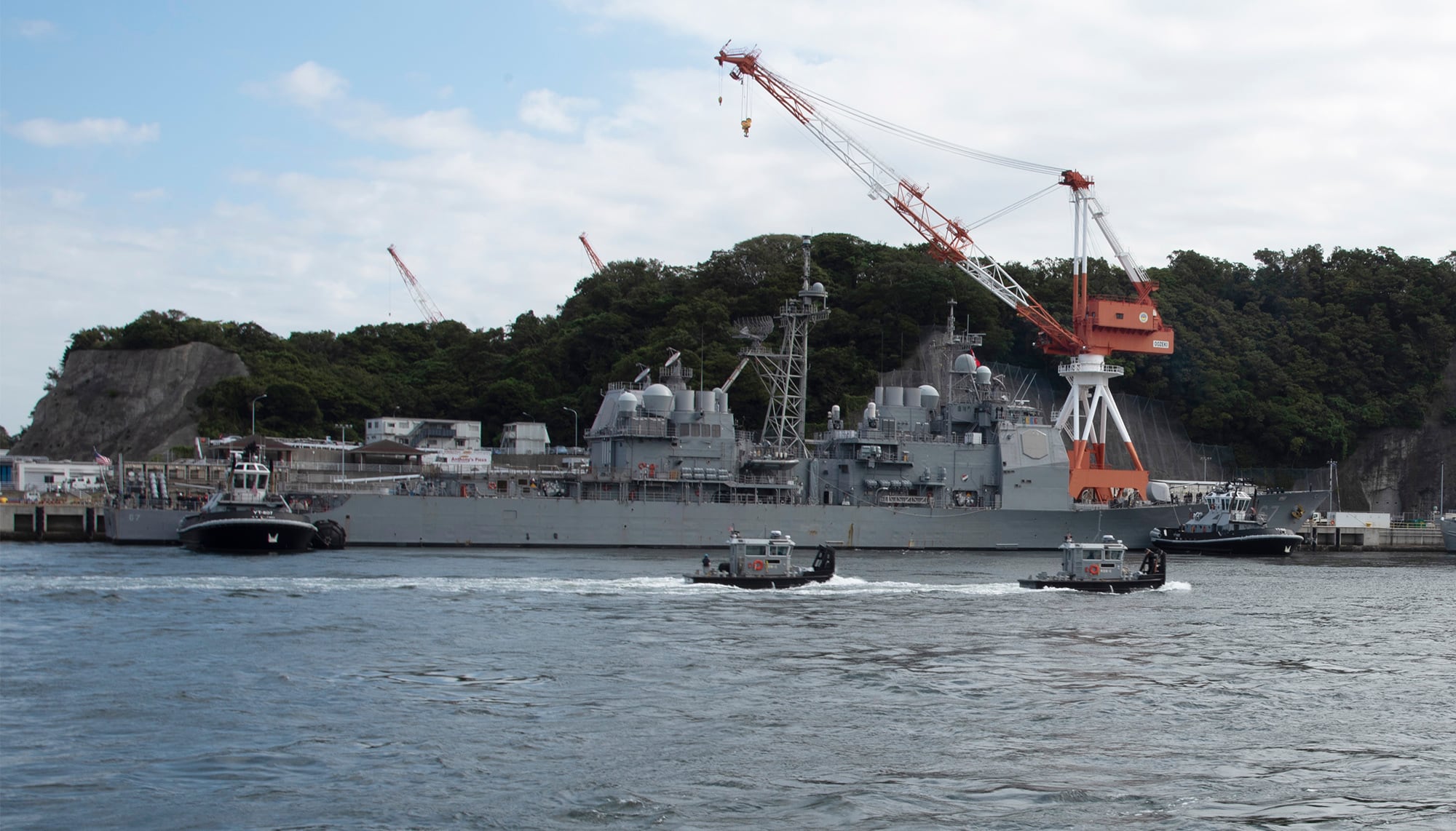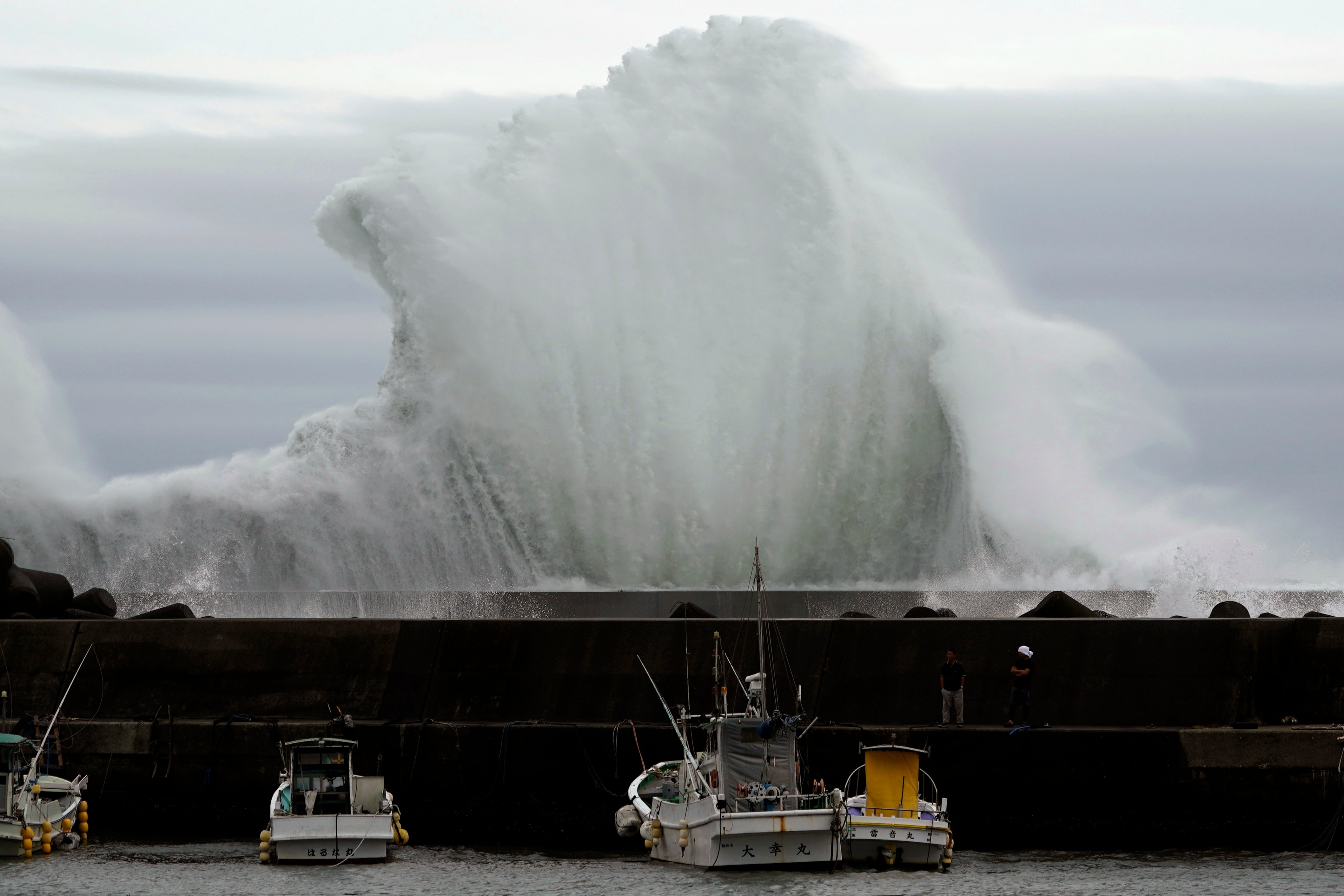TOKYO — A powerful typhoon is forecast to bring up to 30 inches of rain and damaging winds to the Tokyo area and Japan’s Pacific coast this weekend, and the government is warning residents to stockpile necessities and leave high-risk places before it’s too dangerous.
Rugby World Cup matches and other events were canceled on Saturday, and flights and train services were halted. In the town of Kiho southwest of Tokyo, shops were boarded up, boats were anchored and authorities checked coastal levees. Most stores, restaurants and other businesses in Tokyo planned to close, and residents were buying batteries, bottled water, instant noodles and other food.
Meteorological Agency official Yasushi Kajihara said Typhoon Hagibis resembled a typhoon that hit the Tokyo region in 1958 with heavy rains and left a half-million houses flooded.
More than 1,200 people died in that storm.
"In order to protect your own life and your loved ones, please try to start evacuating early before it gets dark and the storm becomes powerful," Kajihara said at a news conference Friday.

Prime Minister Shinzo Abe’s Cabinet held a disaster management meeting late Friday, vowing to do its utmost to protect people’s lives. He said 17,000 police and military troops are ready if needed for rescue operations.
"The typhoon could cause power outages, damage to infrastructure and significantly affect people's lives," Abe said.
Economy Minister Isshu Sugawara urged hospitals and other public facilities to check their backup power supplies.
Hagibis, which means speed in Filipino, was advancing north-northwestward with winds of 180 kilometers per hour (110 mph) gusting to 250 kph (156 mph) on Friday afternoon, the weather agency said. It was expected to weaken as it hugs the Pacific coast of Japan's main island on Saturday, making landfall south of Tokyo and passing out to sea by Sunday afternoon.
The meteorological agency cautioned that the typhoon could trigger waves as high as 13 meters (41 feet) in coastal cities through Saturday.
Up to 80 centimeters (30 inches) of rain was forecast in the capital region.
An evacuation advisory was issued early to 7,568 people on Oshima island in the typhoon's projected path. Shimoda city, west of Tokyo, also issued an advisory to all of its 21,402 residents. Dozens of evacuation centers were opening in coastal towns in Chiba and Kanagawa prefectures.

The storm is expected to disrupt sports and holiday events on the three-day weekend, which includes Sports Day on Monday. Two Rugby World Cup matches — England vs. France and New Zealand vs. Italy — that were to be played Saturday were canceled. Qualifying for a Formula One auto race in Suzuka was pushed to Sunday. And the Defense Ministry cut a three-day annual navy review to a single day on Monday.
All Nippon Airways and Japan Airlines grounded most domestic and international flights scheduled Saturday at the Tokyo, Osaka and Nagoya airports. Central Japan Railway Co. said it will cancel all bullet train service between Tokyo and Osaka except for several early Saturday trains connecting Nagoya and Osaka.
At Narita International Airport, officials holding signs written in multiple languages practiced Friday how to escort passengers to relieve congestion caused by flight cancellations, Kyodo News reported.
Tokyo Disneyland and Disney Sea will be closed Saturday, as will museums, movie theaters and other businesses.
The typhoon is spreading fear especially in Chiba, near Tokyo, which was hit by Typhoon Faxai last month and where homes still are damaged. That typhoon knocked down about 2,000 power poles, at one point leaving more than 900,000 homes without power, triggering concerns about the country's aging infrastructure system built decades ago.
Chiba city distributed sandbags to shield against flooding and urged residents to make sure they have enough food and water and that their phones are charged. Workers placed huge protective nets over debris from the earlier storm still piled in parts of the city to keep it from being blown away by the new typhoon.
Navy Times editor’s note: A month ago, Typhoon Faxai moved over the Kanto Plain, causing three deaths, 40 injuries and stranding more than 17,000 passengers at Tokyo airports.
So Fleet Activities Yokosuka — home to 71 tenant commands and more than 27,000 military and civilian personnel and their families — is taking the even larger Hagibis pretty seriously.
Several U.S. warships already have sortied from Yokosuka and the guided-missile destroyer John S. McCain is tucked into Dry Dock 6 for safe haven.
A combined crew of more than 100 sailors and Japanese civilian workers has been installing storm brows, moving shore power cables and repositioning materiel that could be blown or washed off the piers.
“We are preparing for this storm with the belief that one of this strength has not been seen in Yokosuka for several years,” said Capt. Rich Jarrett, CFAY’s commanding officer, in a prepared statement. “All the lessons learned during the last typhoon are being applied, and then some, to safeguard personnel and our assets.”
In a recent email to all hands, CFAY’s Command Master Chief Derek Mullenhour urged sailors to stow away outdoor items, stay in their homes during the storm and be careful when cleaning up debris when the rains pass.
“We’ve updated all of our recall lists and will start blocking streets when we hit TCCOR 1,” added Master-at-Arms 1st Class Joel Brown, NSF’s assistant anti-terrorism officer. “We also have rooms in the Transient Personnel Unit (TPU) barracks for watch personnel so they will be on the base ahead of the storm.”





